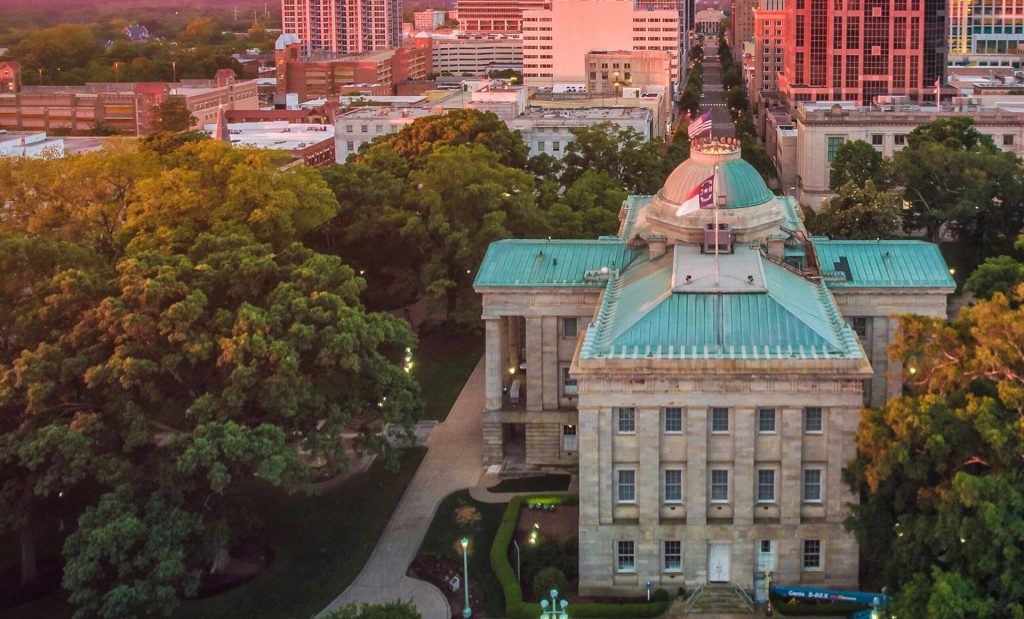The terms “environmentalist” and “conservationist” aren’t used much anymore. And, if they are affixed to someone, it’s not usually meant as a compliment. How did this happen? When did being an advocate for our natural resources become synonymous with being un-American? From a variety of sources, I learned that if you consider yourself an environmentalist, you are anti-business, out-of-touch, crunchy, communist, socialist, and – most importantly – not a patriot.
Not a patriot? Some of the greatest leaders in our nation’s history stood up for our sacred land, water, and air. Protecting the environment didn’t belong to one party and wasn’t a partisan issue: it belonged to all who inhabited the United States of America. As we reflect back on our nation’s evolution, the most prominent figure in our country’s conservationist movement timeline: President Theodore (Teddy) Roosevelt.
After being elected in 1901, President Roosevelt went to work for the environment. He created the U.S. Forest Service and established 51 Federal Bird Reservations, four National Game Preserves, 150 National Forests, and five National Parks. But, he didn’t stop there. Using the 1906 American Antiquities Act, he proclaimed 18 National Monuments, including the Grand Canyon National Park in Arizona and Muir Woods out in California. During his presidency, Theodore Roosevelt protected approximately 230,000,000 acres of public land.
While President Roosevelt is often the first US President associated with conservation, he is certainly not the only who has advocated for making our country (and planet) a greener place. Take President Jimmy Carter. No, this has nothing to do with peanut farming. In April 1977, President Carter urged our nation to make significant changes to the way we viewed energy consumption. Instead of continuing down the same road of dependence on oil and other non-renewable energy, we had to look toward the future: clean, renewable sources. Well, he did mention increasing our reliance on coal as a source of fuel, which we know isn’t exactly what one describes as “clean.” But, this was a huge step (although not popular at the time) in how our citizenry would look toward powering our cars, our homes, and our business. He also passed a few critical laws in the environmental realm: the Soil and Water Conservation Act, the Surface Mining Control and Reclamation Act, the Antarctic Conservation Act, the Endangered American Wilderness Act and the Superfund Act.
Here are three other presidents who you may – or may not – identify as being conservationists of our nation:
- Former President Richard Nixon may not be a crook, but he definitely signed into law legislation that impacts all of us on a daily basis, including establishing the the Environmental Protection Agency and the Clean Air Act. Want more? During his time in office, we passed the Coastal Zone Management Act; the Ocean Dumping Act; the Marine Mammal Protection Act; the Federal Insecticide, Fungide, Rodenticide Act; the Toxic Substances Control Act; the Endangered Species Act; AND the Safe Drinking Water Act.
- With all that has been written about his Presidency, one area that receives less attention is on former President Abraham Lincoln’s passion for nature. At the federal level, Lincoln established the U.S. Department of Agriculture and the National Academy of Sciences. Additionally, he laid the groundwork for the national park system by creating a public trust for California’s Yosemite Valley and its Mariposa Grove of giant sequoias; this was the first time land was set aside specifically for public enjoyment.
- Dubbed “The Soil Savior,” President Franklin D. Roosevelt’s programs helped to shift our arid, dust bowl country back into a robust, thriving place to live, play, and work. Through the Civilian Conservation Corps (CCC), more than 2.5 million Americans went to work, planting trees, improving parks and trails, and developing other environmental and infrastructure safeguards to battle the soil erosion plaguing our nation’s landscape. Furthermore, under Roosevelt’s leadership, both the Soil Conservation Service and the Federal Aid in Wildlife Restoration Act came into fruition.
As we celebrate our nation’s independence this July 4, likely at large gatherings involving grills, food, and fireworks, let’s take a moment and raise a glass to our nation’s leaders who had both the foresight and conviction to protect the places and the resources that we often take for granted. From the national parks where we can vacation with our families to the breathtaking aquatic ecosystems dotting our coasts to the laws working to keep our water and air clean, we have a lot to feel patriotic about when it comes to conserving what makes our country great.
Katie Paulson serves as the Online Engagement Coordinator with the NC League of Conservation Voters. Before moving to North Carolina, Katie spent much of her life exploring the canyons, deserts, and mountains of Arizona. You can reach her at katie@nclcv.org.



